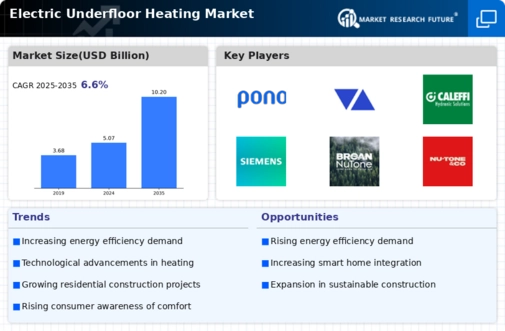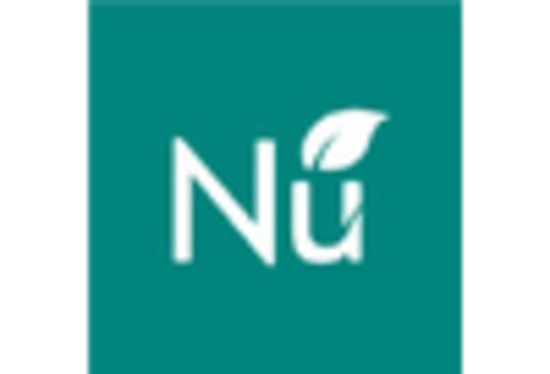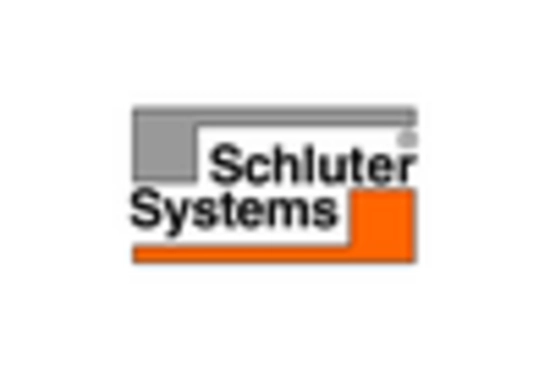Growing Awareness of Health Benefits
The Electric Underfloor Heating Market is also witnessing an increase in consumer awareness regarding the health benefits associated with underfloor heating systems. Unlike traditional heating methods, electric underfloor heating provides a more uniform heat distribution, which can help reduce dust circulation and allergens in the home. This aspect is particularly appealing to individuals with respiratory issues or allergies. As health consciousness continues to rise among consumers, the preference for electric underfloor heating systems is expected to grow, thereby contributing to the overall market expansion.
Government Incentives and Regulations
Government incentives and regulations are significantly influencing the Electric Underfloor Heating Market. Many governments are implementing policies that promote energy-efficient heating solutions, including electric underfloor heating systems. These initiatives often include financial incentives, such as tax credits or rebates, which encourage consumers to invest in energy-efficient technologies. Additionally, stricter building codes and regulations are pushing builders and homeowners to adopt more sustainable heating solutions. As these policies become more prevalent, they are likely to drive the adoption of electric underfloor heating systems, further enhancing market growth.
Technological Advancements in Heating Systems
Technological innovations are playing a crucial role in the Electric Underfloor Heating Market. The integration of smart technologies, such as programmable thermostats and mobile applications, allows users to control their heating systems more efficiently. These advancements not only enhance user convenience but also contribute to energy savings. The market has seen a rise in products that offer better heat distribution and faster response times, making electric underfloor heating more appealing to consumers. As these technologies continue to evolve, they are likely to attract a broader customer base, thereby driving market growth.
Rising Demand for Sustainable Heating Solutions
The Electric Underfloor Heating Market is experiencing a notable shift towards sustainable heating solutions. As consumers become increasingly aware of environmental issues, there is a growing preference for energy-efficient heating systems. Electric underfloor heating systems are often viewed as a greener alternative to traditional heating methods, as they can operate on renewable energy sources. This trend is supported by various government initiatives aimed at reducing carbon footprints, which further encourages the adoption of electric underfloor heating. In fact, the market is projected to grow at a compound annual growth rate of approximately 7% over the next few years, driven by this demand for sustainable solutions.
Increased Renovation and Construction Activities
The Electric Underfloor Heating Market is benefiting from a surge in renovation and construction activities. As more homeowners and builders seek modern heating solutions, electric underfloor heating systems are becoming a popular choice due to their space-saving design and ease of installation. According to recent data, the construction sector has shown resilience, with a steady increase in new housing projects and renovations. This trend is expected to continue, as more individuals prioritize comfort and energy efficiency in their living spaces. Consequently, the demand for electric underfloor heating systems is likely to rise, further propelling market growth.

















Leave a Comment